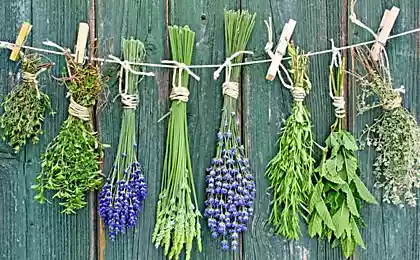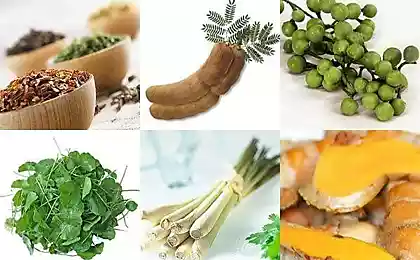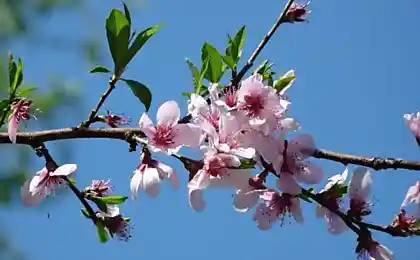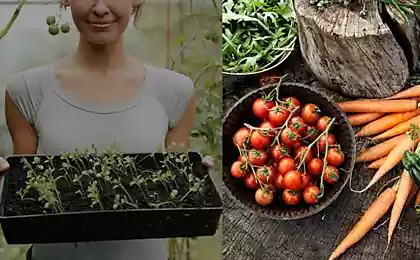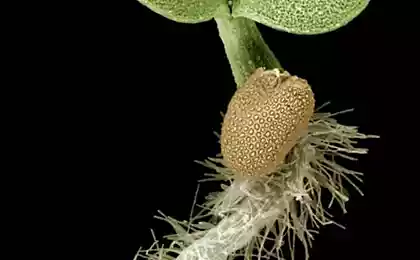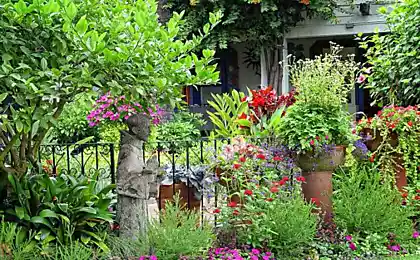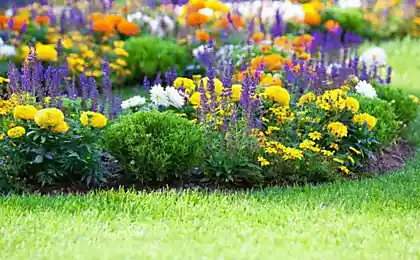797
How to protect plants from the return of frost
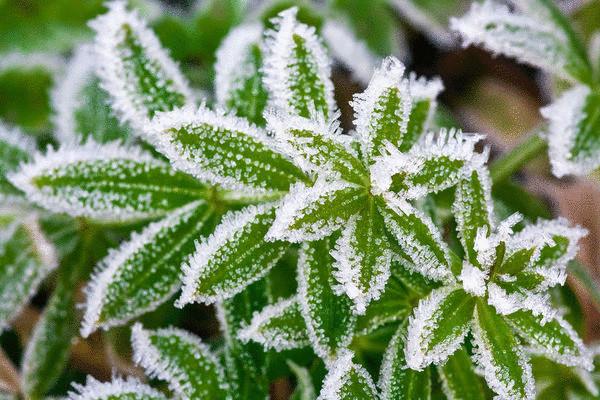
The return of freezing is able to bring a lot of problems. This truism I realized, unfortunately, not immediately. I had to learn from their mistakes, as payback for them was the loss of some plants and part of the future harvest. To warn against such mistakes as you, I want to discuss this relevant to many truckers theme. Let's see how fraught with danger the return of freezing, as they predict and, most importantly, how to prevent their harmful effects on plants.
The dangerous return of the freeze?The harm that recurrent frosts can cause many representatives of heat-loving crops are enormous. However, in the first months of spring, they pose no threat, because the young plants, only which leaves no time to freeze. In the worst case affected only the edges of the leaves, but it will take quite some time and they will recover.
The greater danger posed by the return of late frosts that occur in the middle zone of Russia until the 10th June. They have at the time of flowering crops and fruit trees, emergence of seedlings and planting in the ground the seedlings of heat-loving tomatoes, peppers, eggplant, etc., for which the sudden cold is not only dangerous, but destructive. The fact that the young leaves, flowers and buds are incredibly sensitive to cold and unable to resist him. Under the influence of low temperatures the cell SAP begins to freeze, causing ruptures of membranes, leading to cell death and ultimately death of the plants themselves.
Return of frost afraid not all
The number of plants responds to the return of freezing completely painless. It is primarily a cold-resistant culture, able to withstand low temperatures without significant damage: parsley (to -7...-9°C), carrots (up to -5...-7°C), celery (up to -5...-3°C), onions, dill and spinach — to -5...-7°C.
I could hurt spring frosts?
Some plants under the influence of even a short cold snap can stop the growth. Some do, and freeze or significantly reduce yields.
If to speak about stone fruit — cherry, Apple, peach, pear, apricot, plum, and something detrimental to their kidneys temperature will be around -4°C. they are Most vulnerable at the time of flowering: then they can suffer at -2°C.
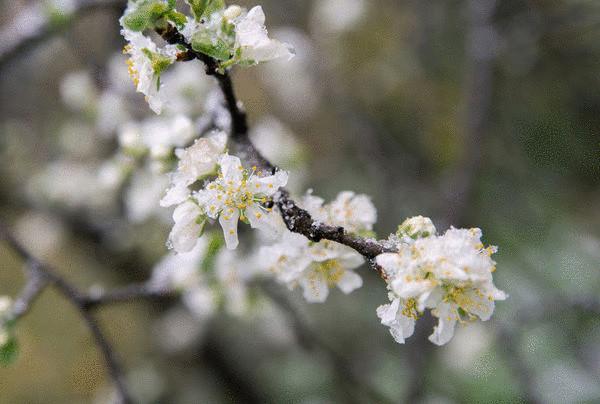
But first, even at -1 °C, suffer thermophilic culture and culture, growing close to the ground. These include cucumbers, zucchini, berries, pumpkin, etc., as well as young seedlings flower crops, such as cobia, Datura, zinnia, etc.
With a slight negative temperatures can be seriously affected and soft or fragile-rooted seedlings of tomato, pepper or eggplant. From freezing at -1 °C... -2 °C, it is unlikely to die, but it certainly will stop growing and start fruiting will be late by about 10-15 days. Therefore, in order somehow to protect young seedlings, do not forget a few days before transplanting into the soil to strengthen it, creating the conditions in which the plants will soon have to "settle".
How to predict the return of freezing
Despite the fact that in the last decade, winters have become warmer obviously, the likelihood of a return spring frost has increased. Of course, to predict them 100% impossible. But why not use the tips of mother nature and the weather forecasts, which are, admittedly, become quite accurate?
Blindly trust the forecast, heard, for example, on TV, not worth it. Forecasters are people just like you, and the technology is not 100% guarantee, so they too, can make mistakes. In addition, the forecast may be true in relation to your region, but not to your garden site. Plants for your cottage can be damaged by frost, and on the adjacent intact. It depends on the different exposure of the slopes and terrain, and the presence near the area of planted forests and even water bodies.
To be sure of the correctness of the forecast, it is better to compare data from multiple sources (TV, Internet, etc.). To predict the freeze will help and the nature itself, and you just need to be a little careful. So, if in the evening the air temperature on the thermometer closer to +1...+2 °C, most likely, the night will be a little frost, and all heat-loving plants need to be protected. The lowest temperatures are not in the night, as suggested by many gardeners, and at sunrise.
On the approach of frost, and say such factors as the cessation of precipitation, cloudless skies and remission of the wind flows. Conversely, in windy, rainy or just overcast weather, the probability of frost is minimal.
Protect the garden from the return of frost
Ways to protect from frost a lot. Some of them perfectly cope with the task. Other, as shown, is quite time-consuming, uncertain or ineffective. Consider them all in one article is impossible, so let's talk about the most popular: sprinkling, smoke, construction of shelters and use of fertilizers.
Method dodawanie method is used when the temperature falls to 0 °C. For sprinkling is necessary for putting on a garden hose fine spray (spray needs to be like rain drops) and completely spray with water trees and shrubs that may suffer from frost. As water freezes, it will generate heat, saving for plants.
The beds with plants also shed a lot, put on hose (watering), or by using a drip irrigation system. Watering is carried out in the evening, a few hours before the expected frost. As soon as the temperature drops toward 0 °C, the water will gradually evaporate. The resulting steam will serve the plants well protected. The fact that it has a high heat capacity, so do not miss to earth streams of cold air, and plants can safely withstand short-term freezing.
The method of sprinkling is considered to be quite effective in freezing -5 °C. However, it will help only in calm weather. Otherwise your effort will simply disappear.
Method dilineated of dymlenija as a means of protecting plants from frost is one of the most popular for many years and even decades.
Its essence is that the plot, bonfires and warm creates a smokescreen. It softens the negative impact of frost on plants.
The fuel can be straw, sawdust, small twigs, fallen leaves, potato leaves, and even dung. It is not important which material will be the basis for life-saving fires. The main thing — to prevent its rapid combustion: it is necessary that he is not burned, and smoldered, releasing a large amount of smoke. For this, most of these materials need to burn damp.
The fire must be arranged so that the smoke spread throughout the treated area. Determine in advance where the wind is blowing (with a large wind technique dymlenija to use does not make sense). One fire is about 1.5 m wide and 40-60 cm tall enough for processing 1 weave. For its construction pre-prepared material is distributed in this way: the bottom is placed about 20 cm of dry material (leaves, twigs, straw, etc.), and the top layer moist (40-60 cm), which will be the source of the smoke. Spread evenly on top of the three-centimeter layer of earth, leaving in the centre a small space: through it will pass the smoke.
All of the above is true for small areas.If there is a need to apply the method of dymlenija on a large area (e.g. large gardens), it is better to not use bonfires, and smoke bombs.
Smoke start as soon as the temperature is approaching 0 °C. it must Last until sunrise: it was then that the temperature reaches a peak negative values. Therefore, the sunrise, the area should be covered with a thick layer of smoke.
Despite its popularity and several advantages, the main of which — the relative simplicity and cheapness, there is this method and disadvantages, because of which today he is considered if not ineffective, it is at least questionable.
The disadvantages of the method:
- The inability to use during strong winds.
- Environmentally unfriendly. About the dangers of burning dry leaves and other garden waste we have already talked here and here. And how to dispose of fallen leaves and other garden debris, you can read here.
- To ensure that the method worked, still needs to be a small breeze. Watch it at night during a freeze when the pressure is high, it is possible extremely seldom. And there will be a small breeze that would blow the warm smoke on the site, and the use of dymlenija not, the smoke will just go up into the sky.
Shelter from scrap to materialobject protection from the return of frost will help simple structures of different covering materials and frame made of wood, fittings or plastic pipes — i.e. something like a small panichkov.
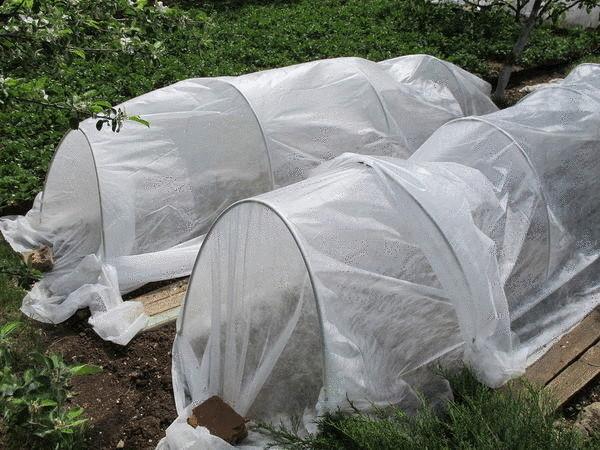
The establishment of such shelters a lot of time will not take, and special knowledge is not required for this, but the benefits will be enormous. Besides, to dismantle them if necessary, as easy as to install.
A simple shelter that can be called a hotbed, it is easy to build multiple identical pieces of plastic pipe bent into an arc and installed in a row at a distance of approximately 50 cm from each other. Stretched on top of the ordinary dense film or any other covering material: 1 layer in case of a cold snap and 2 layers if cold promises to be sustainable. However, the construction of greenhouses it came more than once:
To protect from frosts flowering shrubs — caryopteris, ceanothus, baddley David and others — enough to wrap them with burlap, film or Agroprom. The flowers of strawberries, lost already at temperatures around -1 °C, before the onset of slight frost will also need to cover Agroprom.
Small plants can be covered with clipped plastic bottles, paper caps or plastic buckets (large cups) out of sour cream.
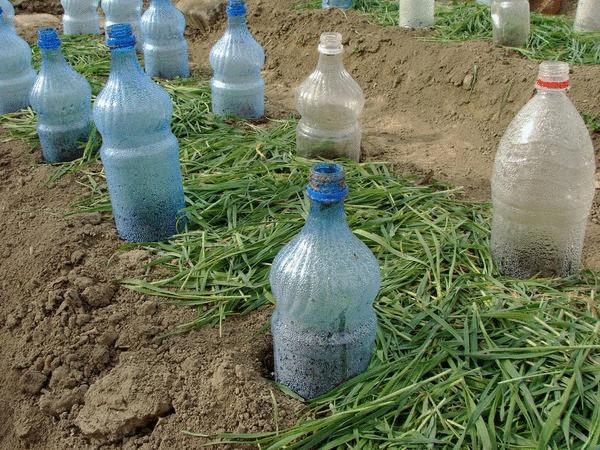
The perfect shelter from the cold can become normal and land. So, not to hurt the seedlings of potatoes, they simply Spud. Ukryvnoy hilling helps to protect the leaf weight and reliably protect the mother tuber, and then freezing the potatoes are not terrible. Repeat hilling possible for as long as the threat of the return of frost will not pass completely.
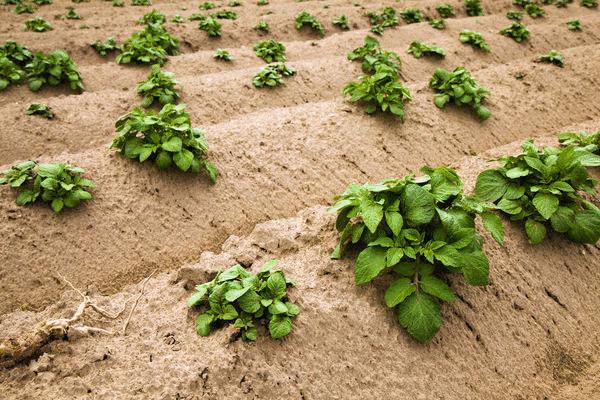
Except in the cases of planting of potato mini and microtubers, Botanical seeds as well as cuttings and sprouts. The fact that at the beginning of the vegetation period of these plants is still very weak. After earthing up, they just can't break through a thick layer of soil and will die.
Shelter from scrap materials perfectly do their job and protect the plants from frost. Most importantly, remember that whatever protective material you use, it should not touch the leaves.
Protection in greenhouses and Pannekoek frosts are expected in the area -4...-7 °C, have to care about the inhabitants of greenhouses and polytunnels: they, too, need shelter.
You can use old Newspapers, burlap or modern sealing materials — agrosan, lutrasil etc.
In the case when the plants inside the greenhouse cover will not work (why would you remove it from the supports already grown tomatoes and cucumbers whip), it is necessary to insulate the greenhouse itself. For this pitch from the same materials additional coverage. You can fix it both outside and inside. Only it is not necessary to attach the second coating to the first flush, leave between them a small air gap: so you guaranteed to keep all the "residents" of the greenhouse from frost.
If plants need to be covered for a few days, regardless of where they grow in open soil or in greenhouse, it is better to use modern sealing material, more about which you can learn from this useful article. To remove shelter of plants is desirable not earlier than 8-9 am.
Stones and plastic bottles, is also can be effective helpers. In order to protect growing greenhouse plants from the return of frost, lay them near boulders or pre-filled plastic water bottle dark color. Warmed up during the day, they will give back heat at night, working on the principle of the heating radiators.
Fertilizer vs frost
To effectively counter the damaging effects of frost (to -5°C) will help and foliar feeding with phosphorus and potassium.
It is possible to use, for example, the drug "Appin", useful information of which you will find in the article a Miracle drug of Appin. Due to the dressing in the tissues of young plants increases the accumulation of sugars, decrease the content of free water and increase the concentration of cell SAP, which means the plants will be protected from freezing.
Important: to make application, contributing to the increase of frost resistance of plants, it is necessary for 10-24 hours before freezing, otherwise the use of such procedures will not.
Probably the ideal way to protect plants from the return of frost does not exist. Each of the above are good in their own way, each has its drawbacks. Which one to prefer — to solve only to you. But whichever method you choose, the plants will in any case grateful for the care and bestow you with a bountiful harvest. published
Source: www.7dach.ru






